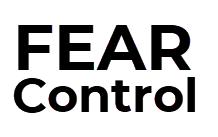If you’ve ever found yourself standing in front of an audience, heart racing, palms sweaty, and words feeling stuck, you’re not alone. Public speaking can be nerve-wracking, but there’s a powerful tool that can help calm your nerves and boost your confidence—breathing exercises.

Why Do We Feel Fear When Speaking in Public?
Before diving into breathing exercises, let’s understand why so many people feel anxious when giving a speech or presentation. Public speaking fear often stems from a few key things:
- Fear of judgment: You worry about what people think of you or how you’ll come across.
- Lack of control: When speaking, you may feel like everything is out of your hands, which heightens anxiety.
- Perfectionism: The pressure to deliver a flawless speech can make even the most prepared person feel uneasy.
But here’s the good news—breathing exercises can help you take control of these fears.
How Breathing Affects Your Nerves
Breathing might seem like an automatic process, but when you consciously focus on it, you can use it to your advantage. Fear often causes shallow, rapid breathing, which makes you feel even more anxious. When you take deep, controlled breaths, it sends a message to your brain to relax. This calming effect not only reduces the physical symptoms of fear but also helps clear your mind, making it easier to focus on what you’re saying.
Simple Breathing Exercises to Try
Here are a few easy breathing techniques that you can use before and during your public speaking engagements to help manage fear:
1. The 4-7-8 Breathing Technique
This technique is designed to bring your body into a relaxed state by controlling your breath. Here’s how to do it:
- Breathe in through your nose for a count of 4.
- Hold your breath for a count of 7.
- Slowly exhale through your mouth for a count of 8.
Repeat this process three or four times before stepping onto the stage or speaking. It helps to slow your heart rate and reduce tension.
2. Box Breathing
Box breathing is another powerful method used by people who need to stay calm under pressure, like athletes or even soldiers. Here’s how you can do it:
- Inhale for 4 seconds.
- Hold the breath for 4 seconds.
- Exhale for 4 seconds.
- Pause for 4 seconds before repeating.
This exercise helps to bring a sense of balance and calm, and it’s discreet enough to use right before your turn to speak.
3. Diaphragmatic Breathing
Often called “belly breathing,” this method focuses on deep breathing from your diaphragm rather than your chest. Place one hand on your stomach and one on your chest. Inhale deeply through your nose, allowing your belly to rise. Exhale slowly, feeling your belly lower. This technique not only helps you breathe more efficiently but also helps keep you grounded and present while speaking.
Incorporating Breathing Exercises Into Your Practice
At Public Speaking Advantage, we encourage people to integrate breathing exercises into their regular practice routine. Don’t wait until the day of your speech to try these techniques. Instead, make them part of your preparation:
- Practice deep breathing while rehearsing your speech. This will help you feel more in control and calm when it’s time to deliver.
- Use breathing exercises during transitions. If you’re moving from one point to the next in your presentation, take a moment to inhale deeply. This can help you stay composed and collected.
- Focus on your breath if you get nervous. If you feel the fear creeping in during your speech, don’t panic. Pause, take a breath, and then continue.
Ready to Take Control of Your Public Speaking Fear?
Breathing exercises are honestly a game-changer when it comes to controlling fear during public speaking. When you feel that anxiety kicking in, focusing on deep, steady breaths helps calm your nerves and slow down your racing thoughts. It gives you a moment to center yourself, making it easier to speak with confidence. Communication courses near me can teach you specific breathing techniques to manage that nervous energy and keep your voice steady. And with communication skills classes near me, you’ll get to practice these exercises in real scenarios, so over time, managing your fear becomes second nature, and you can focus on delivering your message.



